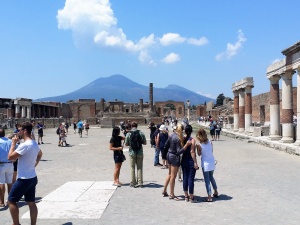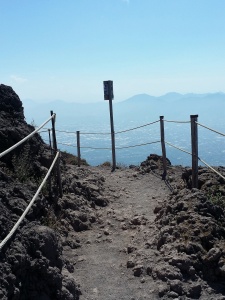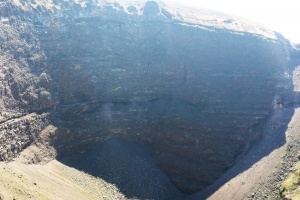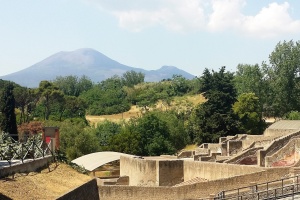 Almost impossible to not fall under her spell this imperious beauty dominates the landscape. Mount Vesuvius at 1,281 metres high lives up to her reputation as a tempestuous beast with a history of causing devastation when angered.
Almost impossible to not fall under her spell this imperious beauty dominates the landscape. Mount Vesuvius at 1,281 metres high lives up to her reputation as a tempestuous beast with a history of causing devastation when angered.
Irrefutable proof points to 79 AD, when a massive eruption destroyed the cities of Pompeii and Herculaneum. Vesuvius holds an unchallenged position as the only active volcano on mainland Europe and is considered one of the most dangerous volcanoes in the world. Despite her reputation, she is far from being the villain of the piece.
To beat the summer heat, I set out by train at 8:13am from Naples’ Garibaldi Station. A worn graffiti covered daily commuter train to Sorrento where people crush into the carriages. It’s a boisterous ride as hordes of people jostle on and off. Musicians, playing joyously, use the route to extract small change euro from the commuters. It’s all very festive. All going well, at 8:36am you fall out at Pompei Scarvi with other tourists who push and shove noisily to get ahead of what lies before them.
From the station an ordinary bus grinds up the early gradients passing cyclists, joggers and walkers. Why, when you can take a bus? Half way we’re offloaded to pay 10 euro to enter Parco Nazinale del Vesuvio. Don’t be last back, you may find the bus left without you.
A nervous fifteen minutes to the summit car park as we climb higher, the road narrows and becomes more precarious. At the uppermost vehicle destination its advisable to take a moment at the one-euro toilet experience. Here the hard part begins for there is still a half kilometre sandy switchback trail to climb to the peak.
The path is defined at the outer edges by ropes strung between wooden poles. That’s all that separates you from replicating history by tumbling over following the lava flow pathway into Pompeii. That’s it thirty kilometres away in the wispy clouded distance.
Like laundry pegged out on a country clothes line people hang bleached, exhausted, red-faced, gasping for air at varying distances along the ropes. Some singles, having been ditched by fitter companions, look pensively upwards. Those who have come as a group and will stay as a group whisper encouragement to laggards. Clearly many made a pact with their deity of choice to reach the crater even if it kills them. Some could get their wish, others could well meet their maker.
Being on Vesuvius makes you pause for breath at the magnificence of her silent power. To be on her slopes is eerie. Grey volcanic rock and sand bearing the sting of scarpering winds bite and push you to the edge. Grizzled and gnarled vegetation work against the odds to straggle into life. Underfoot the rocks are sharp and hot, scorched by the sun.
The air thins. I feel dizzy, whether from lack of oxygen or sheer exhilaration I can’t tell. But I must rest a while. Standing on the escarpment gazing over the uppermost crater rim into her silent heart makes me gasp in awe. Don’t miss the earlier point; this giant is still active.
Later, walking the ruins of Pompeii, Mount Vesuvius can be seen through broken columns, remnants of houses, crumbling forums and public spaces ominously standing sentinel over her handy work as if to say “My work here is done. Maybe.”


